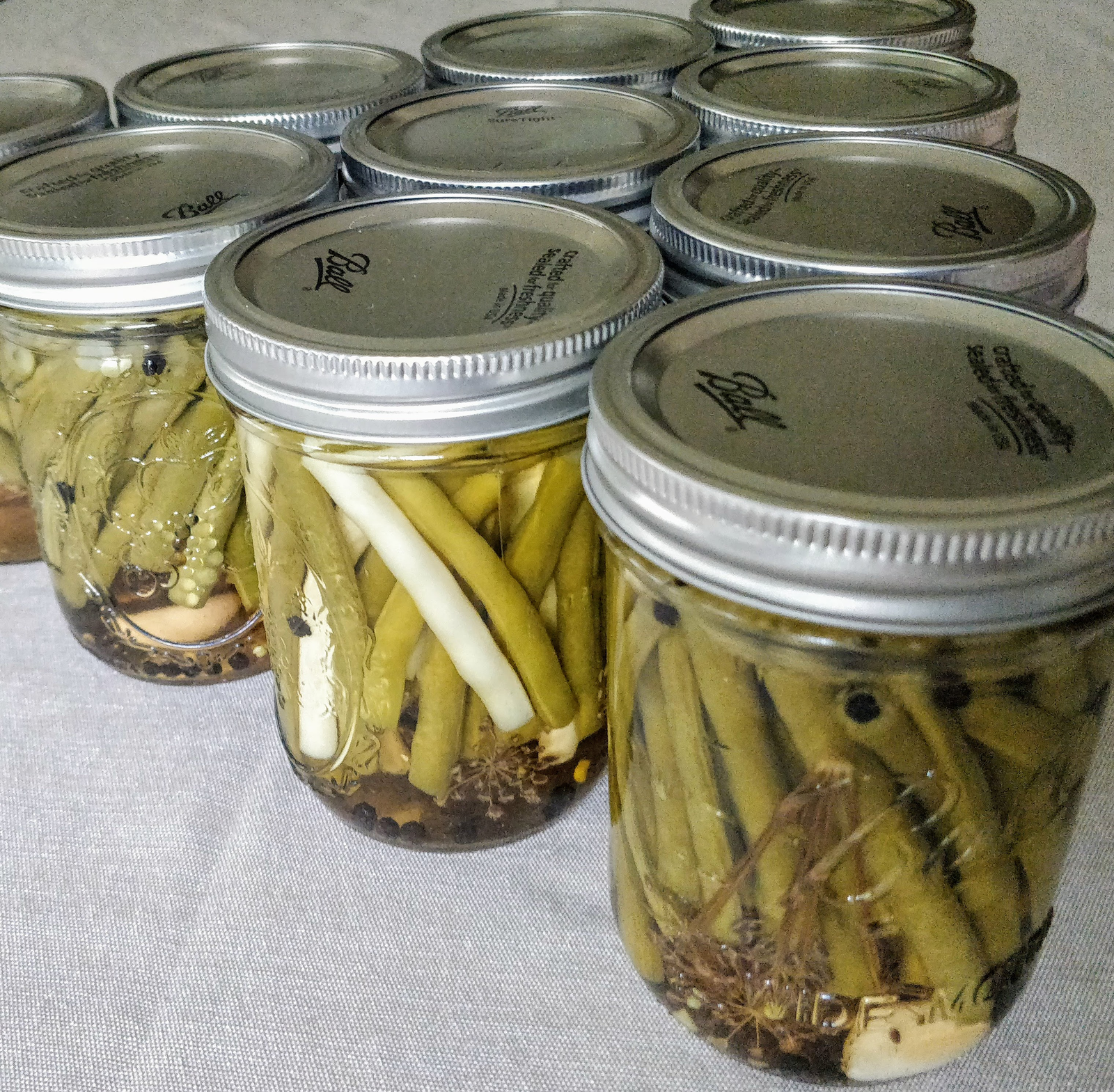The following is enough to make two quarts. Photos show a triple batch. Based on a recipe by Marisa McClellan.
- Beans to fill two quart jars (about 100 beans)
- 2 T black peppercorns
- 2 large garlic cloves (or several small ones), peeled
- Habanero1 pepper, halved, seeds and stem removed
- 2 crowns fresh dill (or about 2 T dill seed)
- 0.25 cups canning/pickling salt2
- 2.5 cups water
- 2.5 cups white vinegar
Bring a big pot of water to a boil. It needs to be big enough to submerge your jars, so this can take a while. Boil empty jars for ten minutes to sterilize them. Boil the lids for ten minutes too; this is easier in a separate, smaller container. Keep the water boiling.
Prepare your beans. Cut off the stems, as well as any blemishes. I like to cut off the pointy tail too, but that’s not strictly necessary. If any beans are too tall to fit comfortably in your jars, trim them to the appropriate length.
 Dill, peppers, etc should go in the bottom of the jar, below the beans
Dill, peppers, etc should go in the bottom of the jar, below the beans
Combine salt, water, and vinegar in a saucepan and put the heat on high. While it comes to a boil, put the black pepper, hot pepper, garlic, and dill in the bottom of your jars. Then stuff as many beans as you can into each jar. Make sure not to bruise them, and leave half an inch of head space at the top.
Use a ladle or measuring cup to pour the brine over the beans and spices. Fill to barely cover the beans, wiggling as you go to dislodge bubbles. Cap the jars and screw the rings on loosely.
 Not pictured: be sure to write the date on your tops!
Not pictured: be sure to write the date on your tops!
Submerge the jars in boiling water for ten minutes to process. This forces air out of the jar, ensuring you get a good seal. Careful not to boil too long, as that’ll cause the beans to get mushy. After boiling, tighten the rings and set the jars on a towel to cool. The “button” on each cap should pop down within the next few hours3.
Let the beans sit for a week before eating. Sealed jars are shelf stable for a year. Refrigerate after opening.
-
Don’t let the hot peppers scare you off! You don’t have to eat them. They’re just there to add flavor to the brine. In the past I’ve even used Carolina Reapers, which are way too hot for me to cook with. The beans turn out spicy, but nothing crazy. Just be sure to wear gloves while working with them – especially if you wear contact lenses! ↩
-
It’s not safe to substitute regular salt for canning/pickling salt! The crystals are shaped differently, which affects how they measure. Swapping one for the other can mess with the chemistry of your brine, allowing dangerous bacteria to grow. ↩
-
If one of your jars doesn’t pop, it hasn’t sealed properly. Keep it in the fridge. ↩
